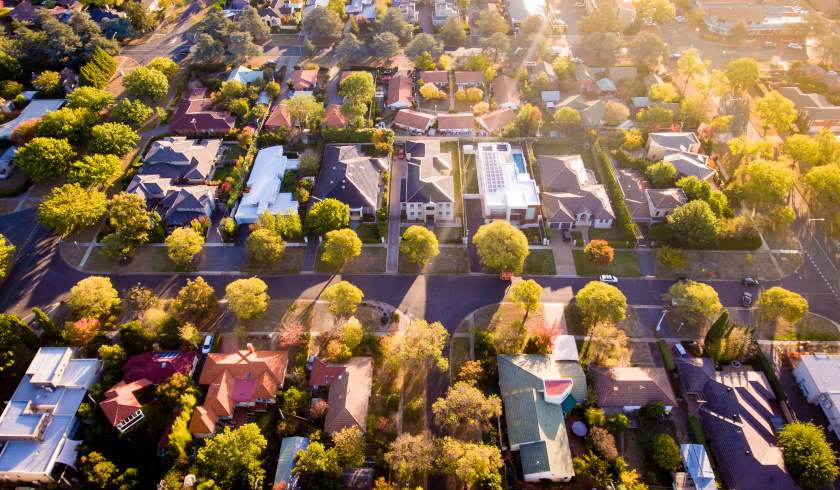Popular capital cities on the rise as market softens over June
New analysis has found that while national dwelling values were down overall during the month of June, some popular capital cities experienced growth.

According to Corelogic’s home value index, national dwelling values declined by 0.2 of a percentage point over June, which Tim Lawless, head of research at CoreLogic, said was the smallest decline since March 2018.
Across the capital cities, the combined figure declined by 0.1 of a percentage point.
Melbourne, Hobart and Sydney all recorded value increases, with Melbourne and Hobart up 0.2 of a percentage point to $619,383 and $453,033, respectively, and Sydney up 0.1 of a percentage point to $777,693.
Sydney and Melbourne’s rises were significant, according to a statement from CoreLogic, as these were the first since the peak of their markets, which took place in June 2017 and November 2017, respectively.
Meanwhile, Darwin and Canberra tied for the greatest value decline for the month at 0.9 of a percentage point down to $387,382 and $585,193, respectively.
This was followed by Perth at 0.7 of a percentage point down to $439,732, then Brisbane at 0.6 of a percentage point down to $486,121 and Adelaide at 0.5 of a percentage point down to $430,654.
In regional areas, the combined regional figure also declined by 0.4 of a percentage point, with regional Tasmania and regional South Australia being the only regional areas to record growth at 1.3 per cent and 0.6 of a percentage point.
Mr Lawless said June’s result was a sign that lowered mortgage rates and improving sentiment are already impacting the housing markets of Sydney and Melbourne.
“The subtle rate of decline was heavily influenced by trends across Sydney and Melbourne where the pace of falling home values has been consistently reducing over the year to date,” Mr Lawless said.
“Importantly, the improving conditions through to mid-May were largely ‘organic’, pre-dating the positive boost in sentiment following the federal election and interest rate cuts in early June.”
Top end of town’s recovery
According to CoreLogic’s data, the top of the market might be leading the market’s recovery, as across the combined capital cities, the most expensive 25 per cent of the market experienced a decline in values by 0.9 of a percentage point, while the most affordable 25 per cent of the market declined by 1.1 per cent. The middle 50 per cent of the market declined by 1.2 per cent.
This trend was exemplified in Sydney and Melbourne’s data, Mr Lawless said.
“Over the June quarter, we saw a reversal of this trend with Sydney’s top quartile values down 1.0 per cent, while the most affordable quarter of the market saw a larger 1.7 per cent drop in values,” he claimed.
“Similarly in Melbourne, the top quartile of dwellings was down 0.1 per cent over the quarter compared with a 0.6 per cent drop across the most affordable quarter of the market.
“Potentially, we are seeing the first signs that the top end of Sydney and Melbourne’s housing markets are leading the recovery trend.”
Rents
On a national level, rents held steady over June, while rental rates were outperforming dwelling values, a statement from CoreLogic noted.
Across the capital cities, gross rental yields are up at 3.9 per cent and combined regional areas also saw gross rental yields increase to 5.1 per cent.
Over the last 12 months, gross rental yields were up in every capital city, with Darwin leading the way at 6 per cent.
Following this was Hobart at 5.2 per cent, Canberra at 4.8 per cent, Brisbane at 4.6 per cent, Adelaide at 4.5 per cent, Perth at 4.3 per cent, Melbourne at 3.7 per cent and Sydney at 3.5 per cent.
Market performance
Mr Lawless said the results for June indicated that the current market softening is “running out of steam”, with May bringing forth a number of changes to bring stability into the market, such as the federal election result and strong population growth.
“Aided by the housing downturn, we have also seen an improvement around housing affordability, although dwelling values remain high relative to household incomes in Sydney and Melbourne. Add to this lower mortgage rates and the high likelihood that interest rate serviceability tests are set to improve,” he said.
While things look positive, Mr Lawless said he does not expect the market to recover rapidly, as the recent market improvement has been focused mostly in Sydney and Melbourne, which feature strong local economies.
“Weaker economic conditions across the rest of Australia is likely to keep price growth at bay in these areas,” he said.
“Although housing credit growth appears to be stabilising after a steep decline, tight credit conditions are the new normal and will continue to dampen market activity. Lenders are progressively becoming less reliant on average household expense benchmarks and prospective borrowers should expect some scrutiny of their balance sheets during the loan application process.
“Additionally, with borrower debt profiles becoming more transparent via comprehensive credit reporting, lenders will have greater visibility of total debt levels relative to borrower incomes, including credit card limits, mortgages with other lenders, personal debt and auto financing. Borrowers applying for debt that is greater than six times their income may find it increasingly difficult to secure a loan.”
Mr Lawless added that another factor hindering the overall Australian property market is an excess of supply, particularly around high-density units in Sydney and Melbourne.
“These markets are moving through the peak in an unprecedented number of off-the-plan unit sales, many of which are receiving valuations at the time of settlement that are lower than the contract price,” he said.



